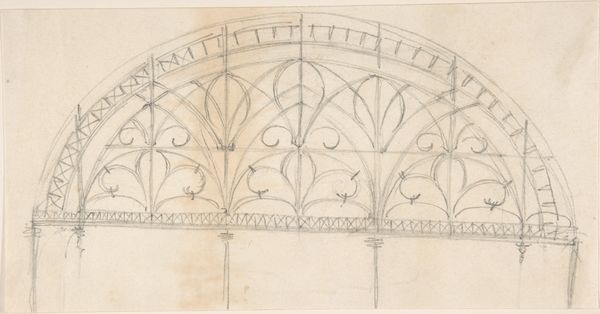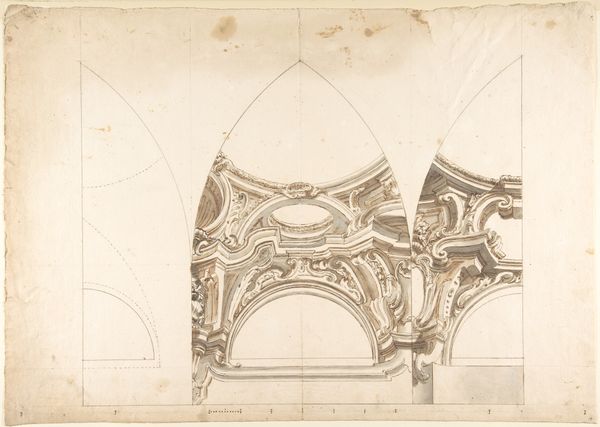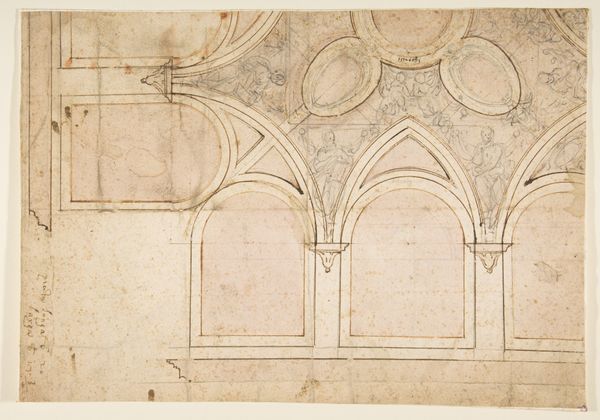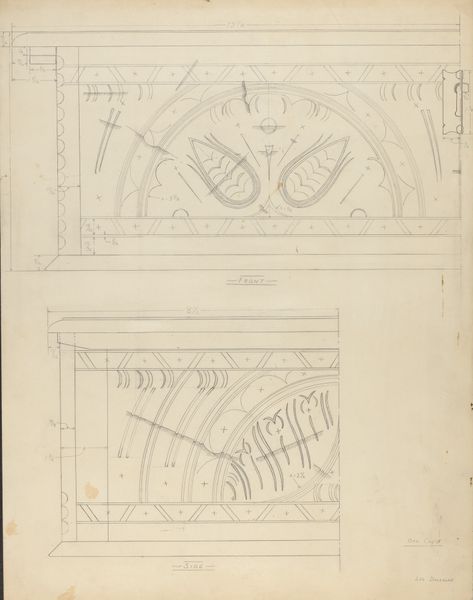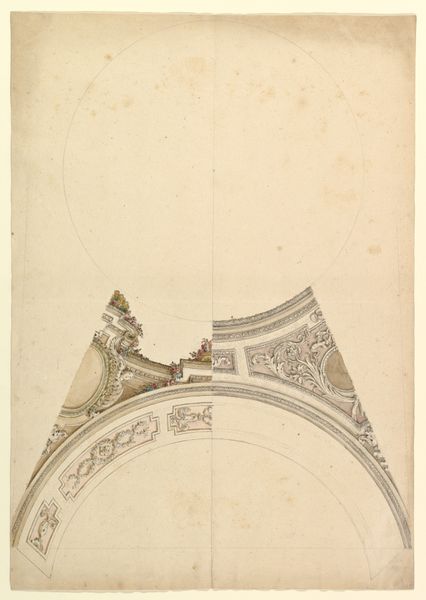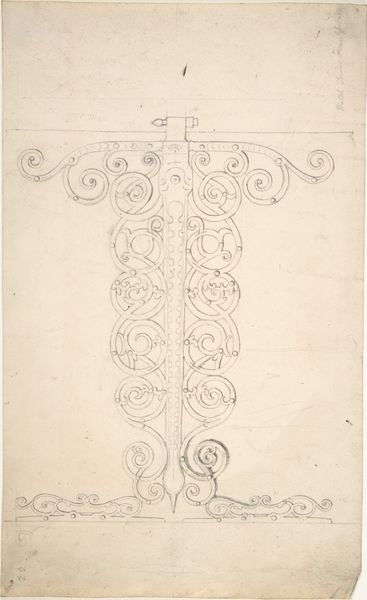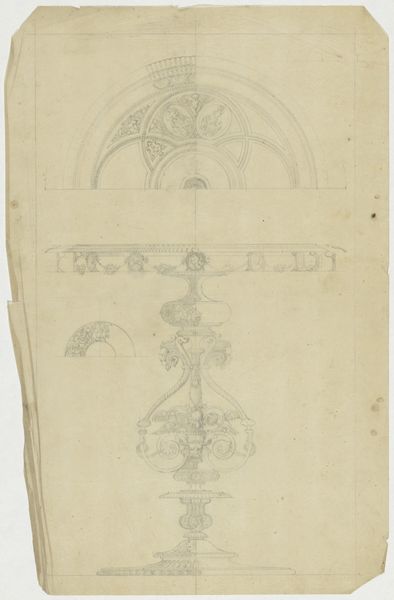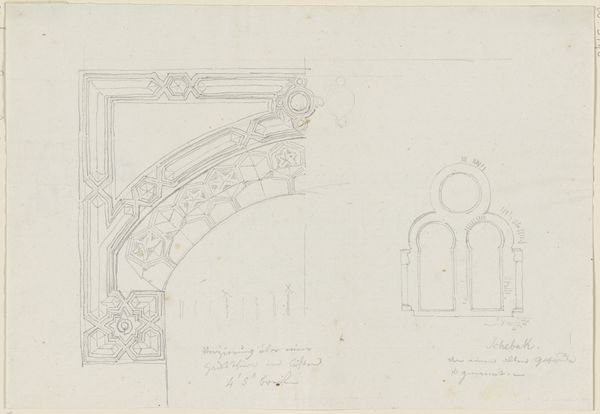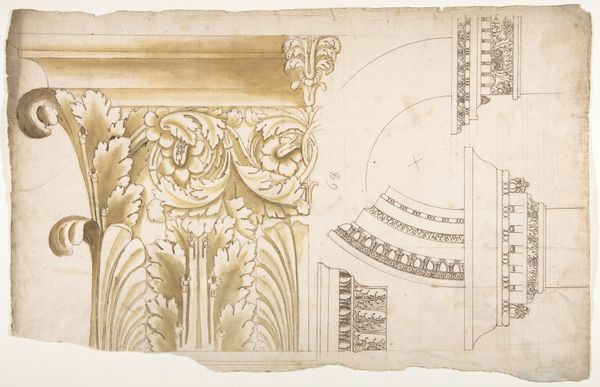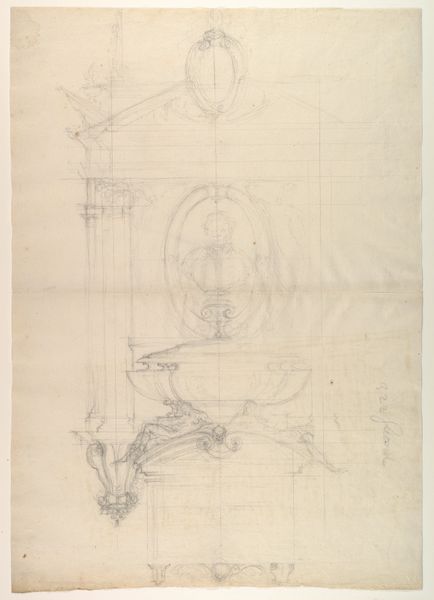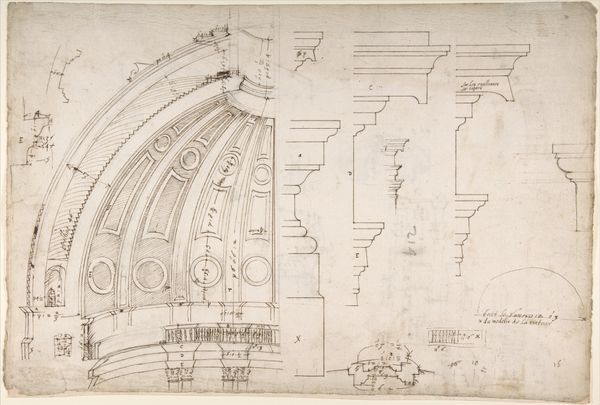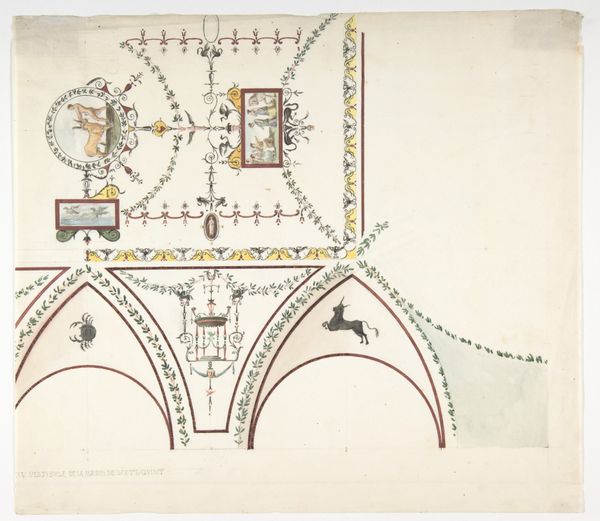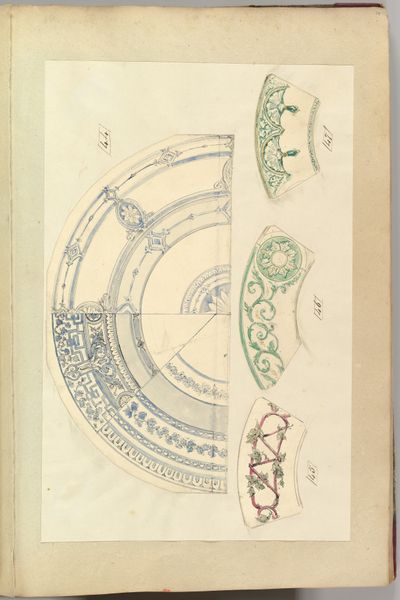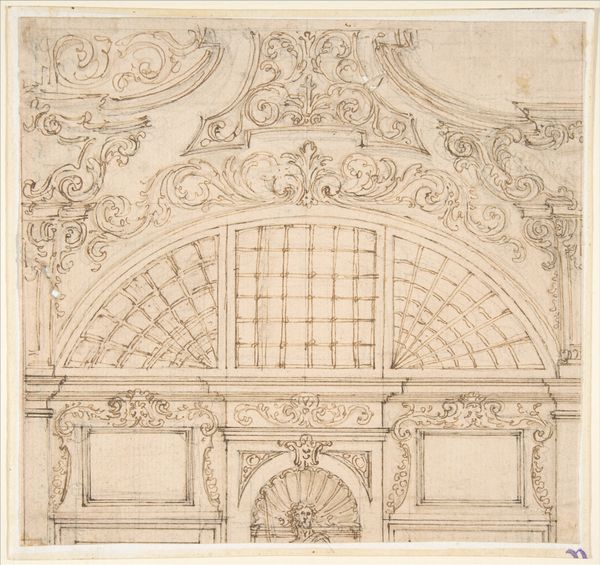
drawing, print, paper, pencil, architecture
#
drawing
# print
#
pen sketch
#
paper
#
geometric
#
pencil
#
architecture
Dimensions: sheet: 8 x 8 3/4 in. (20.3 x 22.2 cm)
Copyright: Public Domain
Editor: This is "Drawing After an Architectural Fragment," an anonymous piece from the 19th century, rendered in pencil, pen and ink. I'm really struck by the intricacy of the gothic archways and the way it’s unfinished in places; you can see the artist’s process. What is your take on it? Curator: I see this drawing as an exercise in power, expressed through the lens of 19th-century artistic education. Architectural fragments like this were frequently copied by students. It wasn't just about technical skill, but about absorbing the cultural values embodied in Gothic architecture: a potent symbol of religious and aristocratic authority. Editor: Authority? I mostly thought of the details, all of the complex shapes that come together. Curator: Precisely. The artist's focus on these elaborate gothic details invites us to consider the original function of the architectural fragment. Where would such a form have been placed? The pointed arches, the geometric tracery - these are elements designed to inspire awe, intended to visually reinforce the Church’s dominion. Don't you think? Editor: Yes, I think I see what you are talking about. Like the fragment’s existence isn't about geometry alone. Curator: Absolutely. Consider also the context: the 19th century, a period of rapid social and political upheaval. Copying these fragments became a way of reaffirming traditional values in the face of modernization. This act of drawing isn't neutral, but a subtle engagement with the politics of imagery. What do you think? Editor: Wow. I always thought art history was about dates and names, but it is about larger things, values that people project, or find. Curator: And the public display of these values in museums like the Met. It prompts a deep consideration of whose values we are preserving and why. Editor: Definitely. Thanks for helping me look beyond the immediate artistry to its historical significance.
Comments
No comments
Be the first to comment and join the conversation on the ultimate creative platform.
